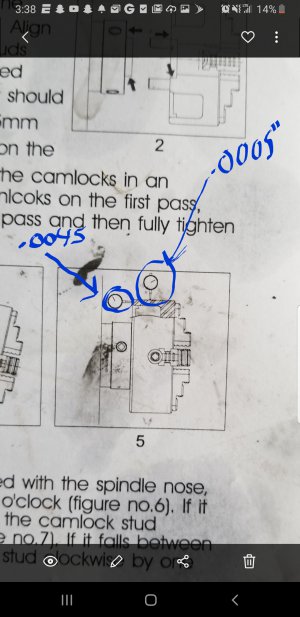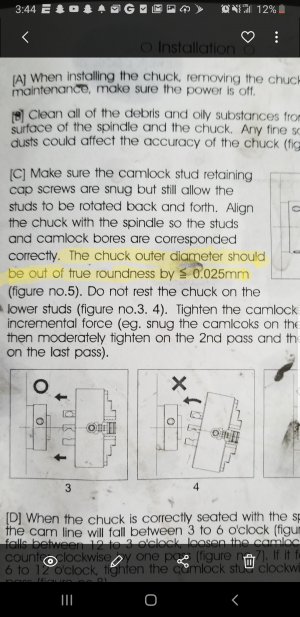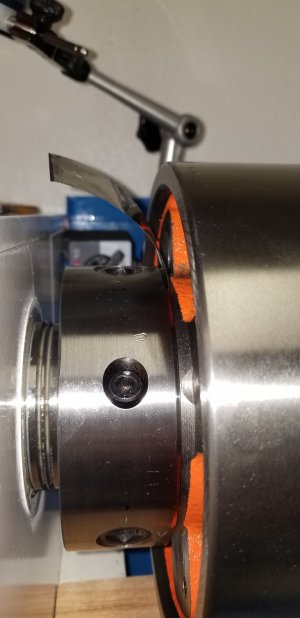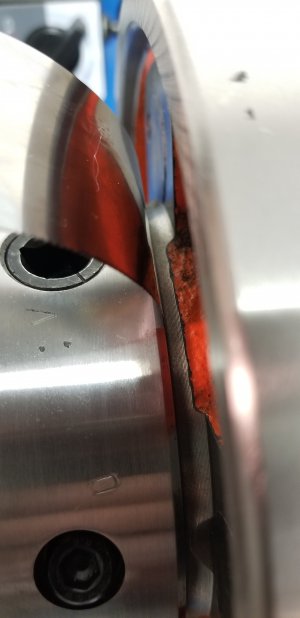- Joined
- Dec 23, 2019
- Messages
- 176
5. Can you send or post a video? That might help. If the chuck has wobble, it seems like it is not pulling up on to the spindle all the way. I am not sure what was meant by the OD of the chuck has .0005 runout (Which is fine) but the back has .0045?
6. I do not know what you mean about the tool post in your first post, that makes it seem even more like its one of our machines since this order had a tool post on it.
5. I'll get video later this evening. I've attached picture to explain where my readings were coming from when I have it "tuned" in

Per instructions here: unless I'm not understanding what this says.

I bought the PM1228 back around Christmas. Not trying to hide anything I just didnt want to look like an idiot and bash an innocent company if in fact it was just me being a newb.
6. The qctp works great. I paid extra for the one that required no mods. Haven't had a single problem with that other than the parting tool holder slipping a bit when it's not tight enough but that doesn't bother me at this point cause I can crank on it a bit and get it to hold for at least one cutoff.


